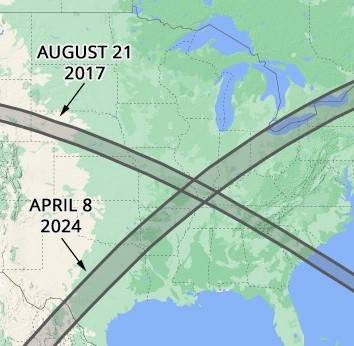Interfaith Insight - 2024
Permanent link for "Seeing the world not as a machine, but as a garden," by Douglas Kindschi, Sylvia and Richard Kaufman Founding Director, Kaufman Interfaith Institute on April 9, 2024
Originally published on Sept. 7, 2017.
The recent solar eclipse caught the attention of nearly everyone as it made its path across the continental United States. While the total eclipse path was only 70 miles wide, millions traveled to that narrow strip to observe this phenomenon, which rarely covers so much of our country. As impressive as it was, I am also struck by our ability to predict with such precision the path as well as where and when it will happen again.
Our understanding of the solar system and its regularity has greatly increased since the work of the early astronomers and scientists such as Copernicus, Galileo, Kepler, and Newton. Their work led to the idea of a mechanical universe, highly regular and predictable. It even influenced our religious conception of God as an engineer who designed such a marvelous structure.
This image of God was greatly reinforced by the scientific developments of the 17th century with Newton and the mechanistic model for the universe. God the creator became God the engineer, the designer of the universe. As our scientific theories became more mathematical we had pictures of God the geometer. Scientists believed they were finding the mind of God as they discovered beautiful mathematical descriptions of the natural world. Even the artists pictured God with a compass laying out the world at creation. This mechanical model for the universe took hold as the predominate picture for the natural order. God was often seen as this engineer-creator: one who not only created the universe, but also created the laws by which this universe would run.
While this mechanical image of the universe may have made sense in a Newtonian world, it no longer works for a where quantum physics is based on indeterminate random events. It doesn’t fit an evolutionary biology based on random mutations and adaptation to changing environments.
Furthermore, it doesn’t even fit our theology of a God who desires good for us but does not take away our freedom and turn us into automatons. Control might not be the only or the best image for how God works in our lives and in our world. Perhaps we need to return to the biblical sources to rediscover the earlier images of a God who shepherds, who plants, who nurtures.
In the second creation story, found in Genesis 2, we see a God who plants a garden, causes trees to grow, and sees that they are watered. God forms Adam from the dust of the ground and breathes “into his nostrils the breath of life.” God walks in the garden in the cool of the day.
We see a different image of God, as a gardener who works with the earth to bring about life. Before I pursue this image further let me confess that I am not a gardener. But I am married to one and so I know a little about how gardening works.
First, a gardener doesn’t control every aspect of her creation. Plants do not always appear where and how it was intended. Sometimes a seed will be carried by the wind or a bird to a different place and the next year a plant will grow in a new location. Sometimes the root system gets too crowded and the plant needs to be dug up, separated and replanted as two or more plants. Weeds sprout up. Soil conditions and weather enter into the process. Some plants seem to have free will. No matter what you think you are intending, they just do their own thing. The gardener’s job is to nurture, shape and care.
Second, gardening takes time. Many years ago we put in a new pergola in our side yard and my wife planted the vines that would cover the structure. I thought it would give us the shade we had hoped for yet that year. It took six years for the vines to reach the top and begin to grow across the top. Now nearly 20 years later it provides a beautiful cover. Gardeners must be patient. Gardening has been described as the art form that requires the longest time to create. It takes hard work, constant effort, and most of all patience to shape and form the contours and colors desired.
Third, a garden is never finished; it is always in process. There is always more to do. It is a dynamic art form. It is not like painting a picture and at some point you are done. It is not like a poem that has a beginning and an end. It is not a symphony that can be heard in one night’s concert. It is always becoming, always being developed, always in process.
Do these characteristics of gardening describe God’s relationship to our world and even to our own lives? Do we understand God as one who nurtures and cares for us and for the creation? Does the working of God’s will often take time, more time than our impatient desires would expect? Is God’s work in the world and in our lives a work in progress, and not yet finished?


